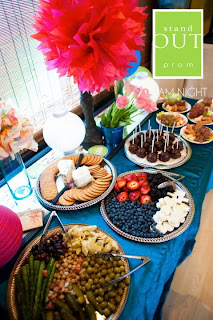Light exposes things in the theater. It storms the stage, a strobe of lightning
shadowing a haunted house. It sets the scene, uncomfortable colors squirming beneath a discordant Renter. It constructs a jail, blue bars crying softly into the bloody red of a Birmingham cell. I decide.
As resident lighting designer at Emerald Ridge High School, performing technical tasks both as a volunteer and a school district employee, I’ve made a career out of backstage obscurity. In the summer before my sophomore year a close friend involved in the theatre department at Emerald Ridge invited me to join the Technical Crew. Of course, I possessed a dearth of knowledge regarding lighting consoles, dimmers, and the fancy lamps that can’t be touched by human hands. Something twisted into a back flip in the region of my stomach when, less than a month after I’d begun my technical career, my friend informed me of my assignation to light board
operations for the fall play. I could barely turn the light board on, let alone program and operate the beast. But one hundred and eighty three time-sensitive light cues later, as I watched the fading frosted box of light caress the innocent man lying dead upon the stage, I became conscious for the first time of a dramatic undertone that would become the intense focus of my high school endeavors.
Just as actors craft expressions, I craft moods. Should no change in lighting hurl Les Miserables’ Jean Valjean from the smokey blues of the Toulon prison into the grey, impoverished streets of Paris or the dank greenish hue of the sewers below, he might as well remain forever in captivity, lacking the means to convey his vehemence upon the stage. Such tragedy haunts the designer’s soul. Without soul in theatre, there is nothing, an emptiness as stark as a naked script not yet clothed in its robe of annotations and lighting cues.
Immediately following the enlightening fall play experience, I immersed myself in the technical field with enthusiasm. I adapted a more professional outlook on my dealings in the theatre, which bled into other aspects of my life; into my three-year tenure as an elected class officer, into my seasons as a varsity track and cross country athlete, into my amalgam of community service hours and resultant United Way community service letters. My passion for theatre prepared me for adulthood.
My first business letter inquired into the possibility of completing an internship at the Tacoma Musical Playhouse, where I undertook one hundred and ninety-five unpaid hours of lighting and set design. During my time at the community theatre I discovered the lighting manual for the board at my high school and invested hours learning to program subroutines, effects, and complex lighting cues previously inaccessible to members of the Emerald Ridge Technical Crew.
The internship led to my continuing seasonal employment as lighting designer for Tacoma Musical Playhouse Kids’ Camp productions. I have been able to give back to my community through the four hundred plus hours I donate each year for the design and operation of school events in the auditorium. I aid in lighting local elementary schools’ dramatic enterprises and participate in the high school Martin Luther King, Jr. assembly, which for the past two years I have directed. This year I wrote the script, blocked the scenes (including a Civil War reenactment complete with fog machines and time-period guns), and choreographed the final musical number. However, the accomplishment of which I am most proud is the lighting and set design for Les Miserables: School Edition.
Painfully aware that the board housed in the Emerald Ridge tech booth could not possibly suffice for perhaps the largest production ever undertaken by the Puyallup School District, I employed the writing experience gained in my other professional endeavors to appeal to local community members for the funding to purchase the necessary equipment. Although unable to purchase a new board, I did procure enough donations to allow its rental.
I launched into my customary eighteen hour days, arriving at school in the dark at six in the morning and often not leaving until the nighttime clock chimed midnight. I focused lights, built a rotating barricade, telescoping lamp posts and a flyable bridge, and painted stones upon the garden wall. Everything had to be perfect.When Les Miserables opened, an elderly man approached me after the first Saturday show to share his opinion that he had ‘seen things on that stage that had never before been conceived,’ and that credit for the astounding look of the show belonged to me. That night I shed my first tears of joy. As a graduating senior, I hope to instill that same joy into the underclassmen I am training to assume lighting duties when I head off to major in lighting design at the Boston University, College of Fine Arts.
I will miss the auditorium which first shrouded me in its comfortable darkness, and then thrust me into full view as last year’s “Techie of the Year,” and earned my school-wide reputation as the “lighting girl who can do anything.” The relationships I have formed through my thespian pursuits will long outlive the transience of their founding productions. Because of theatre, I know, and I am known in, my community. Through the endeavor to procure a better light board I reached outside school boundaries to establish myself in the Puyallup community. In my work on the Martin Luther King, Jr. assembly I developed a relationship with my principal, choir director, office staff, and numerous adults in my high school community. As lighting designer, I earned citizenship in the dramatic world of the acting community.
Life to me is art and the world an empty canvas. I live to create, and create to live. I aspire to reveal the power and beauty of the world to those who view my work, and inspire them to see the artistry in life. In this way, I stand out.





































